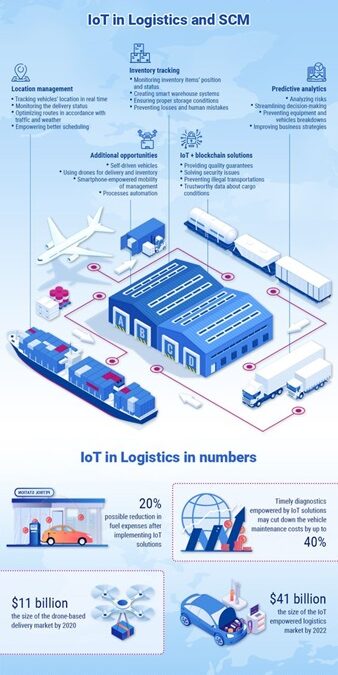Transforming the Supply Chain
Welcome to the era of smart logistics and supply chain management (SCM)! As technology evolves, so does the way we conduct business. One of the game-changing technologies driving this transformation is the Internet of Things (IoT). IoT refers to the network of physical objects embedded with sensors, software, and other technology to connect and exchange data with other devices and systems over the Internet. In the context of logistics and SCM, IoT is revolutionizing the way we track shipments, manage inventory, operate fleets, and analyze data.
Real-Time Tracking
One of the key benefits of IoT in logistics and SCM is real-time tracking. By embedding sensors and GPS technology in containers, pallets, or individual items, companies can monitor the location and condition of their shipments in real time. This visibility not only ensures the security of products in transit but also enables quick responses to unforeseen events, such as delays or disruptions.
Inventory Management
IoT also plays a crucial role in inventory management. With smart shelves and RFID tags, businesses can automatically track inventory levels and get alerts when it’s time to restock. This automation reduces the risk of human error, ensures optimal stock levels, and helps prevent both overstocking and stockouts. The result? Improved customer satisfaction, reduced operational costs, and increased sales.
Fleet Management
When it comes to managing a fleet of vehicles, IoT technology offers unprecedented levels of efficiency and control. Sensors installed in vehicles provide real-time data on fuel consumption, driver behavior, vehicle health, and more. With this data, logistics managers can optimize routes, schedule preventive maintenance, and ensure driver safety, leading to significant cost savings and improved service delivery.
Predictive Analytics
IoT doesn’t just provide real-time data; it also opens the door to predictive analytics. By collecting and analyzing data from sensors across the supply chain, businesses can anticipate future trends, predict demand, and make proactive decisions. Whether it’s forecasting inventory needs, estimating delivery times, or predicting equipment failures, IoT-powered predictive analytics can be a game-changer for logistics and SCM.
Benefits and Challenges
As with any technology, implementing IoT in logistics and SCM comes with its share of benefits and challenges. On one hand, IoT offers real-time visibility, improved efficiency, cost savings, and predictive insights. On the other hand, businesses need to consider factors such as the cost of IoT devices and infrastructure, data security and privacy concerns, and the need for skilled personnel to manage and interpret IoT data.
Maxtrans: Leading the Way in IoT Solutions
At Maxtrans, we understand the power of IoT in transforming logistics and SCM. That’s why we offer customized IoT solutions tailored to your business needs. With our real-time data analytics, comprehensive fleet management, efficient inventory control, and expert technical support, we help you leverage IoT to its full potential.
Whether you’re looking to optimize your supply chain, reduce operational costs, or gain a competitive edge, Maxtrans has the expertise and technology to make it happen. Let us help you navigate the IoT revolution and take your logistics and SCM to the next level.
Conclusion
The advent of IoT has set the stage for a new era in logistics and SCM. Through real-time tracking, efficient inventory and fleet management, and powerful predictive analytics, IoT is transforming the way businesses manage their supply chains. While there are challenges to consider, the benefits of implementing IoT in logistics and SCM are undeniable.
At Maxtrans, we’re committed to helping businesses harness these benefits with our customized IoT solutions. With our technology and expertise, we can help you streamline your operations, improve service delivery, and stay ahead in the fast-paced world of logistics and SCM. Let’s navigate the future of supply chain together.

